From sowing winter salads and feeding tomato plants to harvesting garlic and pruning fruit bushes, there’s plenty of work to keep us busy in the kitchen garden or allotment in the coming weeks.
Helping tomatoes
Let's start with those tomato plants, which at this time of year should be festooned with heavy trusses of plump, ripening fruit. Unfortunately the cold early summer and cool, damp weather of recent weeks haven't been kind to these heat-loving plants. But while it's tempting to start dramatically reducing ventilation in your glasshouse or polytunnel as a way of bumping up temperatures, bear in mind that this also risks raising humidity levels to the point where diseases such as grey mould and blight become a real threat. For the same reasons of disease-prevention, while organic potash-rich liquid foliar feeds such as Vinasse (fruithillfarm.com) will really boost the health and productivity of your tomato plants at this time of year, it's also important to spray these in the morning so that the foliage has a chance to fully dry out before the cooler temperatures that come with nightfall.
Another useful way to help keep your tomato plants happy and minimise the threat of diseases is to make a point of regularly handpicking, bagging and carefully disposing of any obviously diseased leaves or fallen/rotting fruit. Removing any leaves beneath the lowest fruit truss of indeterminate/cordon varieties of tomatoes will also help. To encourage cordon-type tomato plants to pour their energy into fruit production, continue to regularly nip out any baby side or basal shoots. Once a sufficient number of fruit trusses have properly formed or set (typically six to eight if they’re growing in the ground, fewer for container-grown plants), you’ll need to stop your cordon-type tomato plants by nipping out the growing tip of the main stem a few leaves above the highest fruit truss. Also try to avoid overwatering and overfeeding your tomato plants, as this reduces the flavour and quality of their juicy fruits. Instead water only when the compost has begun to obviously dry out, and liquid-feed no more than once a week.
Harvesting garlic
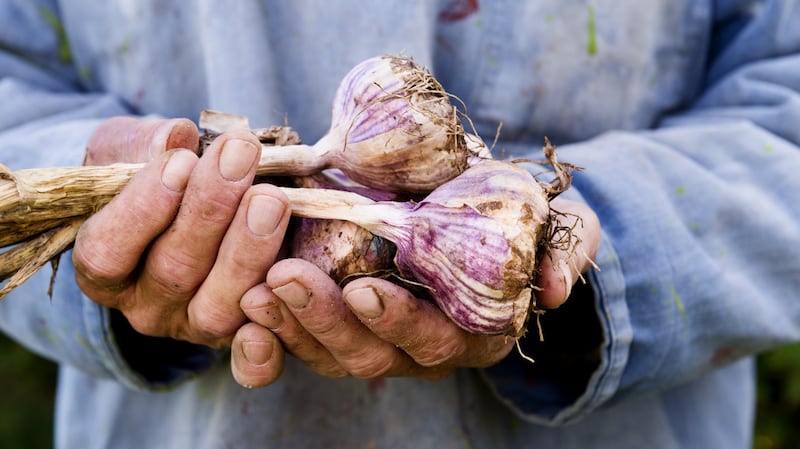
Wondering if your garlic is ready to harvest? If the leaves have started to yellow, then it’s time to quickly lift those plump, flavoursome bulbs before they start splitting open and exposing the individual cloves to the risk of rot. For best results, choose a dry day to do this, using a garden fork to gently dig the bulbs up while making sure to keep the leaves on them (this helps them to store better). Gently shake/rub any loose soil from them before placing them spread out on a table or bench in a glasshouse, polytunnel or a sunny porch for a couple of weeks to dry. Once properly dry, the bulbs can be bunched up and stored somewhere cool and dry to keep them as fresh and flavoursome as possible.
Pruning fruit trees
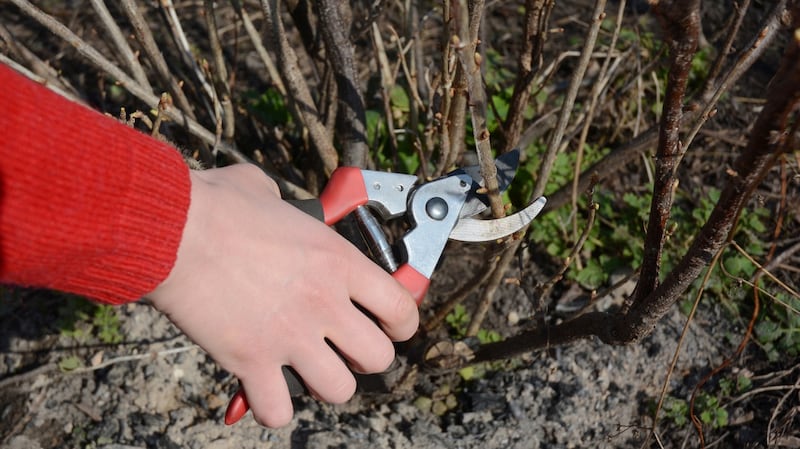
Fancy some pruning? Many (but not all) kinds of fruit trees and bushes can be pruned at this time of year to keep them healthy and productive as well as to prevent them from outgrowing their allotted space. That list includes summer-fruiting raspberries (cut all the old fruited canes down to ground level and gently tie the new growth to horizontal training wires); gooseberries and redcurrants (cut all side shoots back by a third); blackcurrants (cut three or four of the plant's oldest, thickest stems right back down to the ground); and cordon and espalier trained apple trees plus fan-trained peach, pear, nectarine, cherry and plum trees. These are more complicated to prune: see rhs.org.uk for detailed step-by step instructions or get your hands on a copy of a copy of The Fruit Expert by DG Hessayon, which forms part of his classic and very accessible Expert series of gardening books.
Sowing winter salads
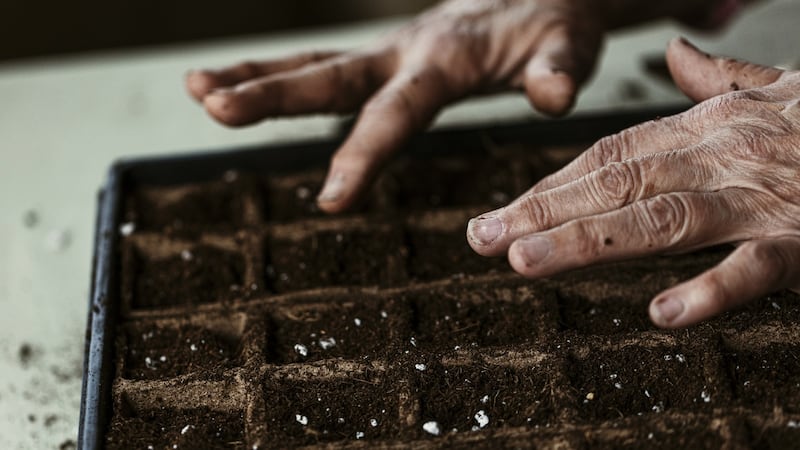
While the crazy rush of seed-sowing that's so much a part of spring and early summer is over for another year, certain crops will do very well from an August sowing, especially if you can give them some form of protection by growing them under cloches or in a glasshouse or a polytunnel. Fast-growing winter salads are an outstanding example, providing many months of tender, flavoursome, nutritious leaves from late summer and early autumn sowings. Suitable kinds include Oriental leaves such as rocket, mustard (varieties green frills and red frills), mibuna, mizuna, corn salad, claytonia and pak choi as well as some of the hardier varieties of lettuce, such as the brilliant little gem, all of which can be either direct-sown into weed-free, fertile, friable, finely raked soil or into modules for transplanting into their final growing positions as young plants. For best results, successionally sow every two to three weeks from now until late September and keep the plants well watered. Other leafy vegetables that will do very well from a late summer/early autumn sowing when grown under winter cover include Swiss chard, and perpetual spinach. Recommended seed stockists include greenvegetableseeds.com, brownenvelopeseeds.com and seedaholic.com.
Affordable cuttings
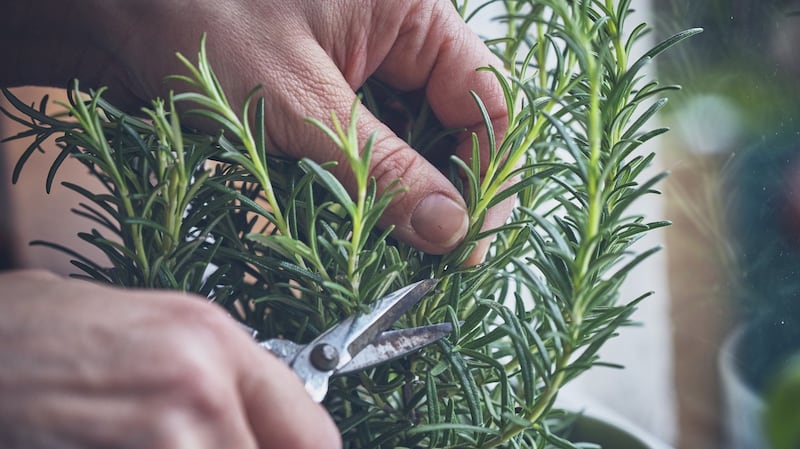
Cuttings are an easy, affordable and wonderfully rewarding way to raise stock of lots of different kinds of herbs including rosemary, lavender, bay, lemon verbena, thyme, oregano, marjoram, mint, sweet woodruff, hyssop and sage. Semi-ripe cuttings and heel cuttings are used at this time of year, using partially ripened or nearly mature shoots that are full of starchy plant food and plant hormones that will help your cuttings to quickly grow or strike new roots.
For best results, select young, healthy, non-flowering shoots and collect your cuttings early in the morning before quickly placing them into a clean plastic bag along with a few teaspoons of clean water until you’re ready to prepare them. For semi-ripe cuttings, use a sharp, clean craft knife or secateurs to cut just beneath a leaf node (a point on the stem from where leaves are growing) and then gently slice or strip away the lower leaves. Also nip out any flower-buds and any very soft growth at the tip of the cutting. You’re aiming for a finished stem length of 10-15cm with one or two sets of leaves at its tip. For heel cuttings, gently pull side shoots from the selected plant’s main stem in a way that leaves a small section or heel of the main stem still attached to the base of each side shoot. Place your herb cuttings into a two-litre pot filled with a good-quality seed and cutting compost lightened with some generous handfuls of horticultural grit or vermiculite, using a pencil or bamboo stick to make the planting holes around the edge of the pot before gently firming them in. Label, water generously and then cover with an upturned clear plastic bag sealed with an elastic band before placing the pot in a warm, sheltered spot out of direct sunshine. Semi-ripe cuttings usually root within four to eight weeks, but if you can offer bottom heat in the form of an electric propagator or heated mat, this will help to speed up the rooting process.
Nurturing soil
Last but not least, nurture and protect your soil. I can't stress enough how important it is to avoid leaving any recently cleared vegetable beds open to the elements – as we go into autumn the inevitable result is damage to soil structure and soil health plus a loss of precious nutrients as well as a rash of unwelcome weed seedlings quickly colonising the ground. Instead try to cover it quickly with an organic mulch (suitable examples include well-rotted manure, home-made compost, grass clippings and proprietary products from Irish companies such as enrich.ie, mulch.ie, and geeup.ie) or with a well-secured sheet of strong black plastic. Another excellent alternative is to sow a cover crop of green manure, which can be dug back into the soil later to help boost soil fertility, support soil health, add organic matter and suppress pests and diseases. Suitable types of green manure for sowing in the coming weeks include field beans, winter vetch (tares), forage rye (also known as Hungarian grazing rye), crimson clover, buckwheat and phacelia. Recommended seed stockists include those mentioned above along with quickcrop.ie.
THIS WEEK IN THE GARDEN
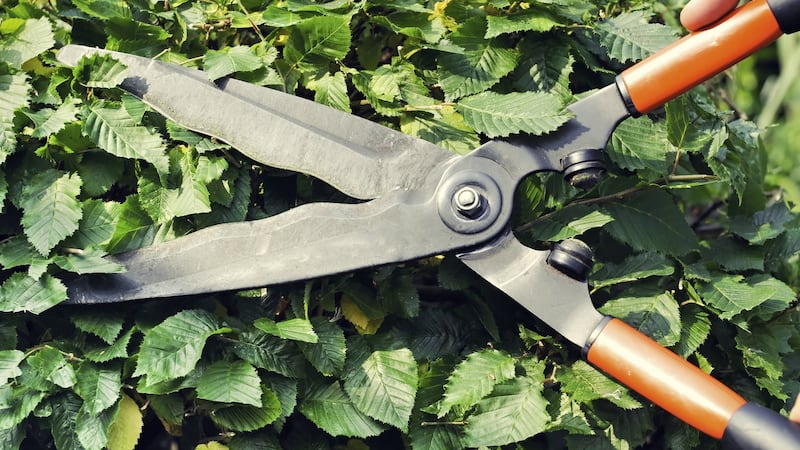
Beech, hornbeam, leylandii and thuja hedges need to be given their second and final trim of the year in the coming weeks (their first should ideally have been given back in May) to keep them neat and tidy over the winter.
Many kinds of plants are setting ripe seed at this time of year, much of which can be harvested and stored for future use (F1 and F2 hybrid varieties are the exceptions). Obvious signs that seed is ripe and ready to harvest include brown or dry stems, seed pods and seed capsules, and seed that is firm to the touch and typically brown-black or golden in colour. Always harvest ripe seed on a dry, still day and place it in a clearly labelled paper bag in a cool, dry spot out of direct sunshine to air-dry.
DATES FOR YOUR DIARY
Sunday, August 29th (9.30am-5pm) Airfield House and Gardens, Overend Way, Dundrum, Dublin 14. The Irish Specialist Nursery Association's late August show will take place, with many ISNA members selling a wide range of herbaceous perennials, clematis, trees and shrubs and garden paraphernalia. irishspecialistnurseriesassociation.com and airfield.ie
















